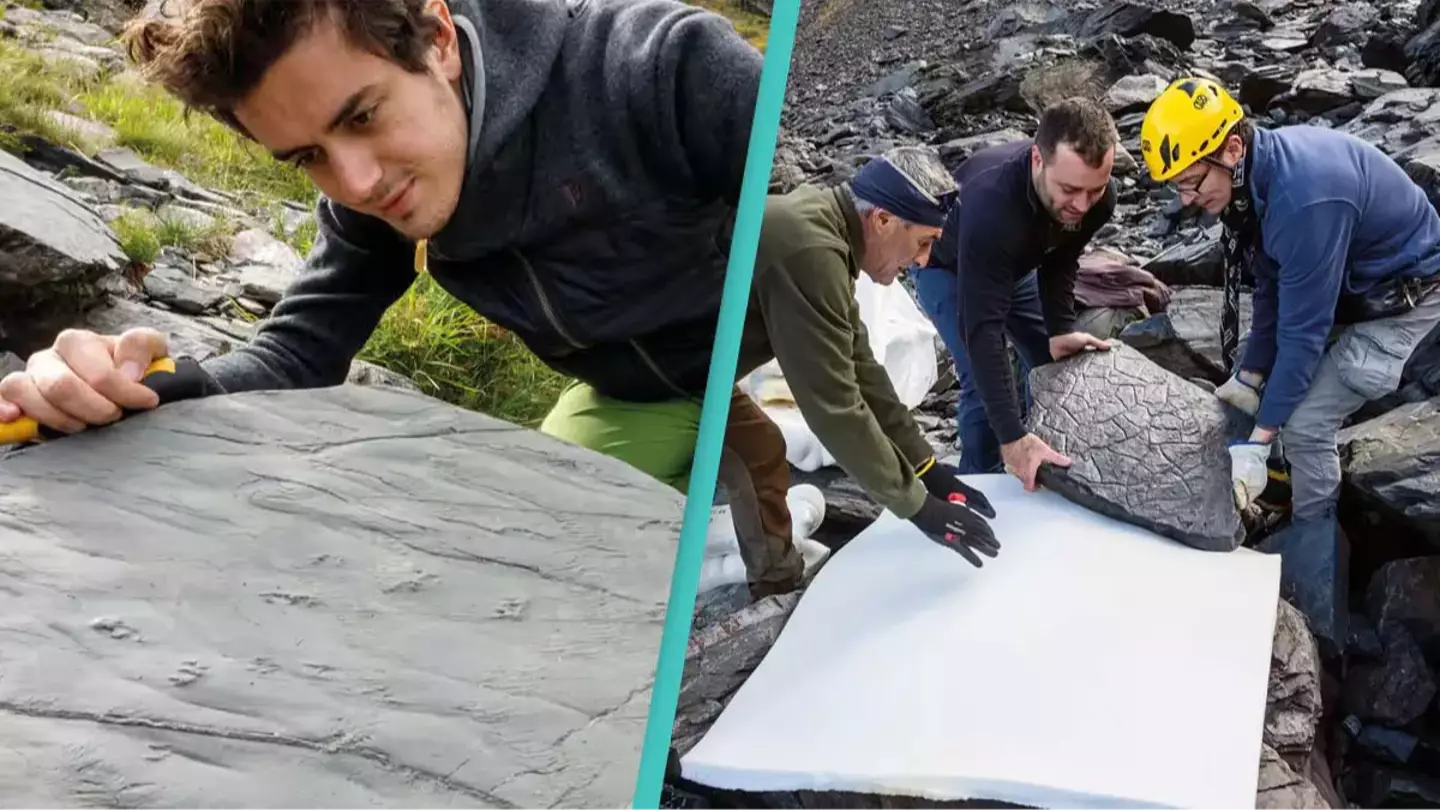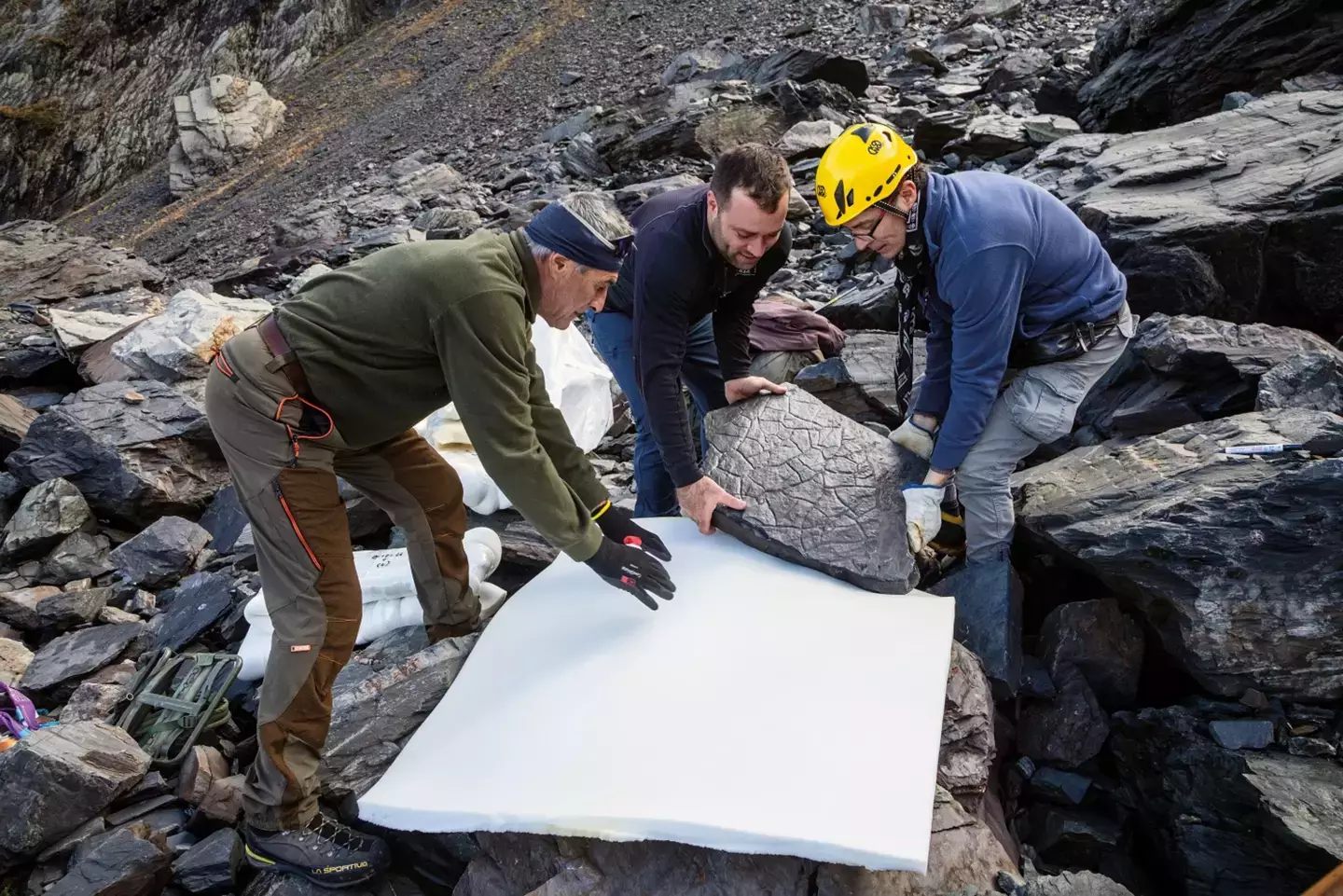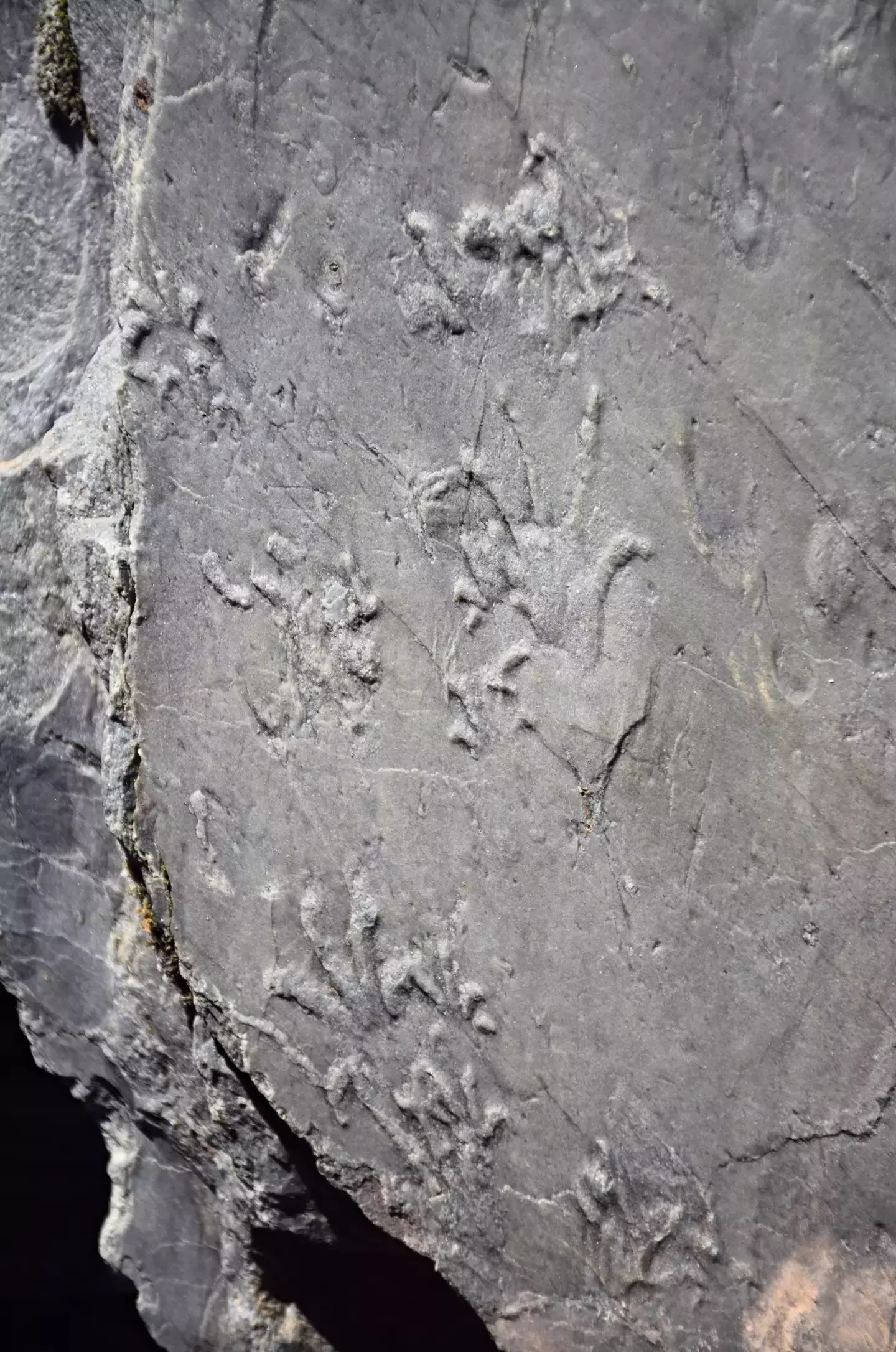
Scientists claim that a hiker who initially stumbled upon a rock covered in ‘strange circular designs’ has unknowingly discovered a prehistoric lost world from 280 million years ago.
Claudia Steffensen, from Lovero, a village in Sondrio province, was recently traveling through the Italian Alps with her husband, and whilst trekking along a trail in the Ambria valley, close to the Swiss border, she is said to have stepped onto a light grey rock, initially believed to be concrete.
Upon further inspection, Steffensen discovered the rock was marred with ‘strange circular designs with wavy lines’, which she believed to be footprints.
After snapping a picture of the peculiar stone, she then sent it to photographer and friend Elio Della Ferrera, who, in turn, passed it on to Cristiano Dal Sasso, a palaeontologist at the Museum of Natural History in Milan.
Advert
As per The Guardian, Dal Sasso recruited other experts to pour over the image.

It was then revealed by the specialist that Steffensen was right—the markings on the rock were, in fact, footprints.
And amazingly, they belonged to a reptile that supposedly dates back roughly 280 million years to the Permian period.
Advert
Scientists believe three or perhaps even four major extinction events took place in the Permian age. This is also when the Earth’s crustal plates formed the single, massive continent called Pangaea.
Speaking about the groundbreaking discovery, Steffensen explained that she and her husband had only headed into the Ambria Valley to escape the heat.
“On our way back down, we had to walk very carefully along the path,” she told The Guardian. “My husband was in front of me, looking straight ahead, while I was looking towards my feet.
“I put my foot on a rock, which struck me as odd as it seemed more like a slab of cement. I then noticed these strange circular designs with wavy lines. I took a closer look and realised they were footprints.”
Advert

After analyzing Steffensen’s initial image, experts proceeded to map out an area of the Valtellina Orobie nature park - including at altitudes of almost 3,000 metres.
Visits to the area have been taking place since the summer of 2023 and have reportedly yielded hundreds of other fossilised footprints.
It’s understood these tracks have come from at least five different species of animal.
Advert
“The discovery in the Ambria Valley is also an effect of climate change,” said Doriano Codega, president of the Valtellina Orobie nature park.
“The exceptional thing was the altitude – these relics were found at very high levels and were very well preserved.
“This is an area subjected to landslides, so there were also rock detachments that brought to light these fossils. This is a very important paleontological discovery.”
Lorenzo Marchetti, an ichnologist at the Museum of Natural History in Berlin also said the preservations revealed ‘impressive details’ such as ‘the imprints of fingernails and the belly skin of some animals’.
Topics: History, Science, World News
